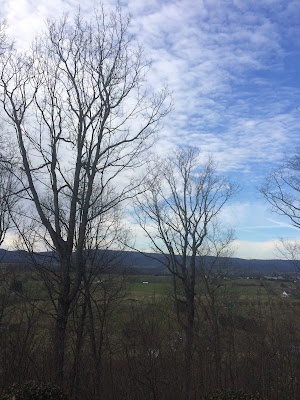Bike racks, as shown in this
picture, are often trivialized and ignored by the typical person if they are even
noticed at all. However, contrary to what
most people might think, bicycle racks are having a significant impact in protecting
our environment, and their role continues to grow each and every day. The Green RFP program at Virginia Tech was
established a few years ago in order to give students an opportunity to develop
sustainable ideas that could be immediately implemented on campus. The cultivation of this program has resulted
in an outpouring of creative, innovative solutions to environmental
issues. One of the most successful
proposals of the Green RFP program involved the installation of covered bike
racks at various locations across the Virginia Tech campus. The purpose of this proposal was to promote
an eco-friendly mode of transportation, and to reduce students’ dependence on
automobiles. Providing students with a
safe, convenient place to park their bike during class or other events has
significantly increased the incentive for them to avoid driving around the
hectic campus roads every day. These
bike stations have become extremely popular, as evidenced by the cluttered racks
in this picture. Because of this, vehicle emissions containing
greenhouse gases are being reduced, and the demand for sustainable
transportation is growing. Around the
world, many countries are attempting to encourage their citizens to adopt “clean”
transportation methods such as walking, biking, or using public transit in
order to meet their needs. While it may
seem like an insignificant, pointless process to install bike racks around
campus, there is no doubt that it can have a large impact on the
environment. In order to help preserve
the environment, our society must continue to adopt simple, sustainable, and affordable policies.
Wednesday, March 14, 2018
Tuesday, March 6, 2018
Anxiously Awaiting the Arrival of Spring
Although a preview of warm,
summer-like temperatures occurred in Southwest Virginia for extended periods throughout
the month of February, it appears that many plants and trees made the correct
decision to resist the urge to bloom until the aforementioned warmer
temperatures become more consistent. This
picture, captured on March 5th, 2018 in Wytheville, Virginia depicts
a group of normally vibrant, hearty trees that have remained dormant despite
the warmer temperatures earlier in the year.
While the specific species of the group of trees is unknown, it seems to
be a common theme amongst all types of vegetation in this area not to have
produced a bud yet, resulting in a reduced presence of wildlife. This subject is interesting to me because I
had never pondered what causes flowers to bloom at different dates during the
spring before and the effects that this process may have on animals. Exactly what determines the timing of flora
blooming has been the subject of a highly contested debate; however, it appears
that most scientists are now in agreement that vegetation is able to sense the
amount of sunlight it receives per day.
This capability allows the greenery to determine the approximate length
of each day, which in turn influences their decision as to what time of the
year they will bloom. Another
interesting aspect of this picture is the background of the photo. Logically, the cumulus clouds floating in the
sky signal a day comprised of mild, sunny weather, which is perfect for
enjoying outdoor activities. Luckily,
this area avoided the arrival of any cumulonimbus clouds, which warn of a storm
in the near future. It is quite
remarkable the amount of information that can be drawn from a geographic
picture based strictly on the content that it illustrates.
Sources:
Britt, Robert Roy. “Mystery
Solved: How Plants Know When to Flower.” LiveScience, Purch, 11 Aug. 2005,
www.livescience.com/377-mystery-solved-plants-flower.html.
Subscribe to:
Comments (Atom)

